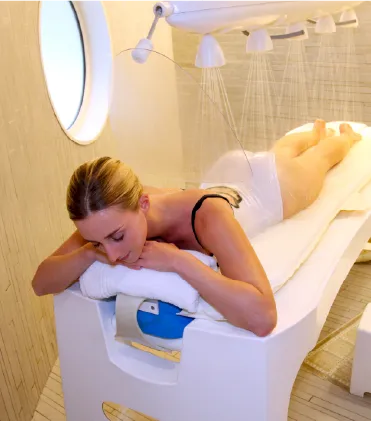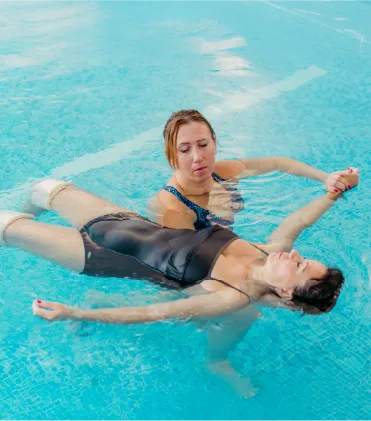What is the Treatment?
Floatation therapy is also known as sensory deprivation therapy. In this treatment, an individual involves lye down in a tank filled with warm water and Epsom salts that allow the body to float in the tank. Tank is specifically designed to block out all external stimuli such as sight, sound, and touch. Floatation therapy creates a calming environment that promotes deep relaxation and mental clarity. During the session, the individual is advised to take control of breathing.
Philosophy/Origin
Floatation therapy was developed in the 1950s by a neuroscientist, John C. Lilly. It was originally used to study the effects of sensory deprivation on the mind. By blocking all the stimuli from the outside, individuals focus on their body and soul so that they can gain maximum benefit from the therapy. Over time, it became popular for its powerful stress-relieving properties and ability to improve overall well-being. It provides a break from the sensory overload of daily life.
Some of the key benefits are described below
Physical Benefits
Mental/Emotional Benefits
Long-Term Wellness
Regular floatation therapy can improve mood and reduce stress. It supports better mental focus and creative function of the brain. Floatation therapy helps manage pain and reduce symptoms of chronic illnesses. It also encourages mind-body interaction and emotional balance.
Ideal Audience
Floatation therapy is ideal for those who are facing problems with various conditions like stress, chronic pain, and deep mental problems. It is also beneficial for athletes who need faster recovery and for individuals working to improve focus and creativity.
Specific Conditions
The following conditions can be treated with floatation therapy
The treatment of floatation therapy involves the following steps
Preparation for the procedure
The therapist consults and provides a detailed explanation of the floatation process. The individual will then be directed to shower to cleanse their body before entering the float tank.
Entering the Float Tank
The float tank will be filled with warm water and Epsom salts. The individual will be instructed to step into the tank, lie down, and relax. It allows the high salt content to naturally support their body and promote effortless floating.
Sensory Deprivation
Once inside the tank, the client has the option to close the tank door in order to block out all light and sound. The water is set to body temperature which creates a sensation of weightlessness as the high salt content allows the client to float.
Floating Session:
The floating session is of 60-90 minutes. During this time, the body and mind of an individual enter a deeply relaxed state which promotes a sense of tranquility and well-being.
Post-Float:
After the session, the individual will rinse off the Epsom salts. Many float centers offer a relaxation room where clients can rest and absorb the effects of floatation therapy to get maximum benefits.
What to Expect
During the float, most people feel weightless as their body naturally floats in the water with the salt mineral. The sensation of floating and the complete absence of external stimuli can lead to a deep state of relaxation. Some people report feeling like they are drifting in space, while others fall into a sleep-like state.
Immediate Effects
After a session of flotation therapy, a person may feel a sense of relaxation and calm. They feel reduced muscle tension and pain and an increase in focus and observation. It also helps in lowering stress levels and improving mood.
Long-Term Effects
Long-term effects of floatation therapy promote better sleep quality and reduce symptoms of insomnia. It also provides relief from long-lasting pain and speeds up the recovery process from physical exertion. It also improves the high-level functions of the brain like creativity and problem-solving skills.
Before the Treatment
A person undergoing floatation therapy should avoid caffeine or large meals before the session to help the body fully relax. It is also necessary to take a shower to cleanse the body before entering the float tank.
Aftercare
After a session, individuals are asked to rinse off the salt and hydrate well by drinking water. It is also advised to take time to relax afterward to maximize the benefits of the float. Some people experience an increased sense of calm and focus for hours or days after the float.
Floatation therapy is widely available in different countries around the world like India, Belgium, and Bulgaria. Wellencia is a wellness treatment platform that offers various treatment consultations including floatation therapy. The therapy is increasingly popular in cities globally and is often combined with other holistic treatments for a complete wellness experience.







